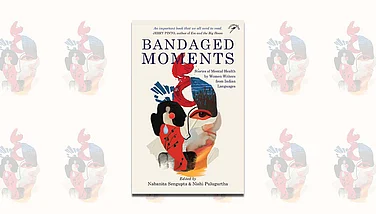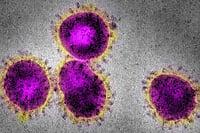Before we get into the paratha and potatoes of this story, let’s be clear that this is not another Partition tale rising from the tomes—non-fiction and pulp alike—that we have swallowed, ruminated and digested. Countless depictions of those horrific days, since the Radcliffe Line was drawn and millions were uprooted from their hearths, have made most of these tales a stale topic; almost cartoonish at times. In a way, we have become desensitised to those horrors. Then again, Chhotu is a Partition story—“a parable of the past that is not removed from the present”. Part novel, part art and equal parts tender love and boundless suffering, this coming-of-age story is a commentary on something more pervasive and endemic if you scratch beneath the surface. It is a commentary on the violence and oppression that persist to this day.
On the face of it, Chhotu is about Chhotu, the orphan—a slap-happy schoolboy growing up in the lanes of Chandni Chowk, with best friend Pandey and love interest Heer, the new girl in the locality and school. The British are about to leave, freedom is a matter of days but something sinister is shuffling in the horizon. Just when Chhotu’s love is about to blossom, an aloo crisis hits uncle Bapu’s paratha business. The story then trapezes through a snaggle of political upheavals, communal blood-savagery and personal intrigue—almost Bollywoodish, like the “golden age SRK trifecta: K3G, Kuch Kuch, and DDLJ”. But all along, you could feel love radiating from the pages, up to a letter from Srinagar at the end.
By now, you have figured out Chhotu is a graphic novel, what an English professor calls a highfalutin term for comic books. All the characters are anthropomorphic: Chhotu, the cheeky monkey; uncle Bapu, elephant-like and wise, his proboscis sniffing out trouble; Heer, the doe; Shere, the curmudgeonly villain with a sad and murderous past. Does it closely shadow American cartoonist Art Spiegelman’s Pulitzer-winning Maus? No, Chhotu is not a pastiche. Of all things that define this genre, the first and foremost priority is to make the story and visuals enjoyable to read and look at, which demand keeping the pace moving. Author Varud Gupta and artist Ayushi Rastogi manage to pull off both.
The artwork doesn’t reflect film noir or comic strips. The graphic artistry sparkles in black and white, supplementing the fiction that is actually a very clever allegory on what most people would call a weird, shameful chapter of our history. The story pictorially unlocks the inner machinations of cold, plain and simple life—and the distorted reality of terrible events that have far-reaching effects.
Halfway through a book is the best time to decide whether to abandon it or not. Chhotu doesn’t allow such a thought. It is compelling, a “single tomato that can change the entire gravy”. Oftentimes, we take for granted events that have made compelling stories over many years and will continue to do so for the foreseeable future. And, as they say, those who forget history are doomed to repeat it.

























